And now for something completely different…
What started out many months back as just an interesting little blog (from something I unearthed in my seemingly bottomless harp guitar “To Do” folders) ended up as an extensive and pretty exhaustive 6000+ word research project, so I ended up publishing it on the more permanent site. (Note: I made the effort to publish this sooner than later after recently coming across several “harp-guitar” entries in the online Chronicling America archives that would undoubtedly cause confusion to researchers; specifically, that in the same pre-1900 years, these various “harp-guitar” entries were referring to at least three completely different instruments. My just-posted 12-string Guitar article now fully covers these various non-floating-string “harp guitars in name only.”)
For those wishing to skip to the heart of the matter, just jump to the end of my new web article. However, as it took me quite a while to get there (hours>weeks>months), you may find the provenance, and my eventual analysis worth reading first.
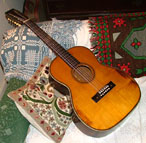 As the site and this blog are of course harp guitar-specific, I should make clear that I am going decidedly “off-topic” and referring to what nearly everyone today considers the standard 12-String Guitar. In other words, the regular steel-string guitar with 6 double courses (the 4 lowest strung in octaves, the top 2 in unison) – not a 12 string harp guitar such as a Dyer with 6 on the neck and 6 subs. (You know how I like to use “course,” and not “string,” right? It’s for just this kind of confusion…)
As the site and this blog are of course harp guitar-specific, I should make clear that I am going decidedly “off-topic” and referring to what nearly everyone today considers the standard 12-String Guitar. In other words, the regular steel-string guitar with 6 double courses (the 4 lowest strung in octaves, the top 2 in unison) – not a 12 string harp guitar such as a Dyer with 6 on the neck and 6 subs. (You know how I like to use “course,” and not “string,” right? It’s for just this kind of confusion…)
So what does the 12-string guitar, popularized by dozens of memorable players from Leadbelly to Leo Kottke, have to do with harp guitars?
Only that it is my belief that the ubiquitous instrument largely evolved from an instrument called the “harp-guitar.”
Ah, but not “our” harp guitar, so don’t freak out.
I haven’t kept up with investigation into the history of the instrument, but some Googling shows that it is still a popular topic, and no one seems to know for sure exactly when the “first 12-string guitar” appeared, how and why.
Except me.
I’m just showing off. I may be completely wrong – and yet I’ll go out on a limb and state that I find the hypothesis I’ve published online pretty compelling. At any rate, it’ll be interesting to see the reaction (if any) and hopefully what new information it helps unearth.
For those interested, here is The Birth of the American 12-string Guitar.

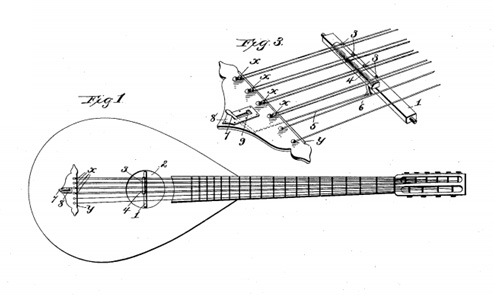

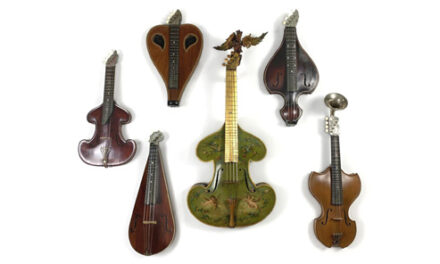
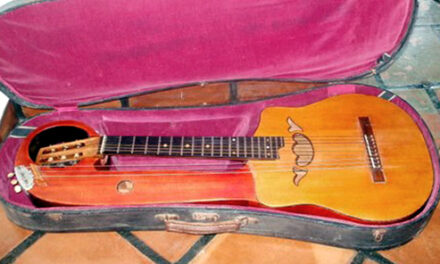
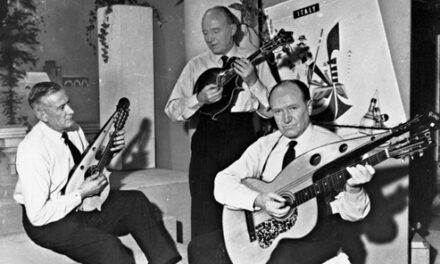
An excellent start indeed. The question, howver, reminds me in an odd way of the Watergate hearings, as in “what did they know and when did they know it?”
Esau
Interesting theories, but what makes you so sure that the Spanish, Mexican or Portuguese vihuela was unknown to American luthiers? I ask you this after attending a Cape Verdean funeral 2 weeks ago where 2 of the musicians playing a dirge at the recessional were playing traditional old world vihuelas with textbook ornamentation on the top plate.
Esau
Ah, but as you read, I’m NOT sure. I have no doubt some of these were known to certain builders and players. But I’ve seen little provenance, and no musicological/sociological evidence to support anything but the most minor influence. For more background, I’d suggest reading Jeffrey Noonan’s “The Guitar in America” and all the trades (Cadenza, Crescendo, TMTR, etc) to get a better perspective of the marketing and dissemination of early American instruments. I’m no expert, but it seems pretty simple to me. Hopefully, the article will bring Mexican and Latin American plucked stringed instrument researchers out of the woodwork to weigh in. Good start, no?